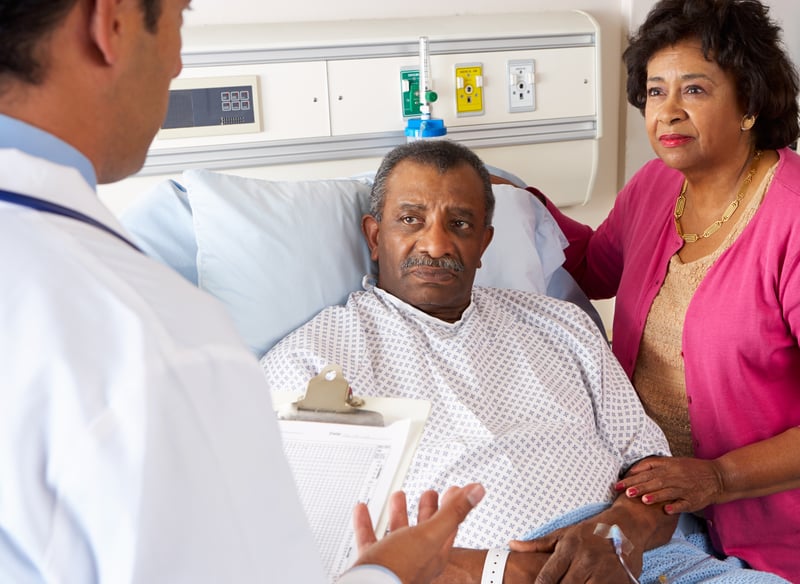(330) 876-1228
8507 Main StreetKinsman, OH 44428
(330) 876-1229

Men of all races and ethnic groups who have prostate cancer fare equally well when access to care is identical, a new study finds.
The disparity in outcomes from prostate cancer between Black, Hispanic and white men disappears when treatment and care are the same, as it is in U.S. Veterans Health Administration (VA) hospitals. In fact, Black and Hispanic men, on average fared better than white men, researchers report.
"Traditionally, the outcomes for Black and Hispanic patients, at least in non-equal access health care settings, have been poor," said lead researcher Kelli Rasmussen, an epidemiologist at the University of Utah School of Medicine.
"There's a myriad of reasons, one of which we know is that prostate cancer often presents in Black patients at an earlier age," she said. "They usually have poor survival outcomes."
But the VA is a unique situation where veterans receive the same care regardless of their income, Rasmussen said. "That means that these men don't face some of the challenges that people who are not veterans often face with regard to health care, like inadequate insurance or poor access to care in the private sector," she said.
Rasmussen believes that if you look at other medical conditions, the disparity in outcomes between white and minority patients would also disappear.
"These patient populations have a lot of disparities when it comes to accessing the health care system," she said. "We don't really know at this point which diseases would be affected, but given our findings, we definitively think that would be the case."
"When Black and Hispanic men have access to equal health care, they have improved outcomes," Rasmussen added.
For the study, Rasmussen and her colleagues collected data on nearly 13,000 men diagnosed with prostate cancer in the VA health care system from January 2006 to December 2020. These cancers developed into a deadly type of cancer called non-metastatic castration-resistant prostate cancer.
The researchers found that the median time to either the spread of cancer or death was 6 years for Black and Hispanic patients and 4 years for white and other patients.
The median unadjusted overall survival was just over 6 years among all patients, 8 years for Black patients, 8 1/2 years for Hispanic patients, 5 1/2 years for white patients and 4 1/2 years for other patients, the researchers noted.
The report was published online Oct. 11 in the journal JAMA Network Open.
Why Black and Hispanic men do better than white men isn't clear, Rasmussen said. "Here, we're seeing not just a few months of better survival, but we're actually seeing years."
It's possible that men in the VA system are being diagnosed earlier, which may account for better survival, Rasmussen speculated.
A cancer expert not involved with the study stressed the significance of accessing care.
"There's no question that equal access is important," said Dr. Anthony D'Amico, chief of the Division of Genitourinary Radiation Oncology at the Dana-Farber Cancer Institute in Boston.
"If you marginalize somebody by not giving them access to health care, then delay in diagnosis happens with cancer, with diabetes, with heart disease. So, equal access is really very important," he said.
D'Amico's one quibble with the study is that he doesn't believe the researchers have shown that given equal access to care, Black and Hispanic patients do better than white patients.
"In terms of this specific paper, they haven't quite proven the point only because a very important prognostic factor is missing in the model, namely Gleason scores [prostate cancer grades based on tumor cells seen in biopsy] that are predictive of outcomes, but having said that, I believe it's probably true," he said.
More information
For more on prostate cancer, see the American Cancer Society.
SOURCES: Kelli Rasmussen, MS, epidemiologist, University of Utah School of Medicine, Salt Lake City; Anthony D'Amico, MD, chief, Division of Genitourinary Radiation Oncology, Dana-Farber Cancer Institute, Boston; JAMA Network Open, Oct. 11, 2023, online
